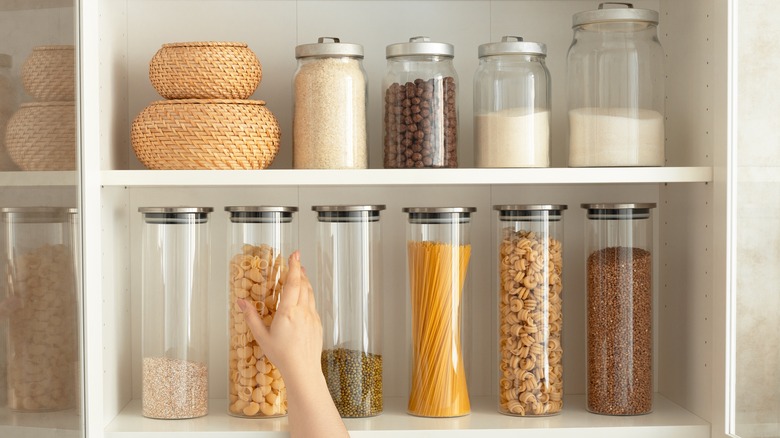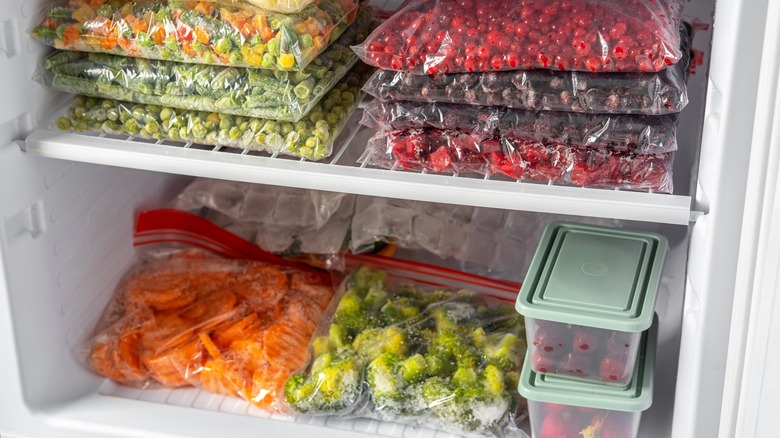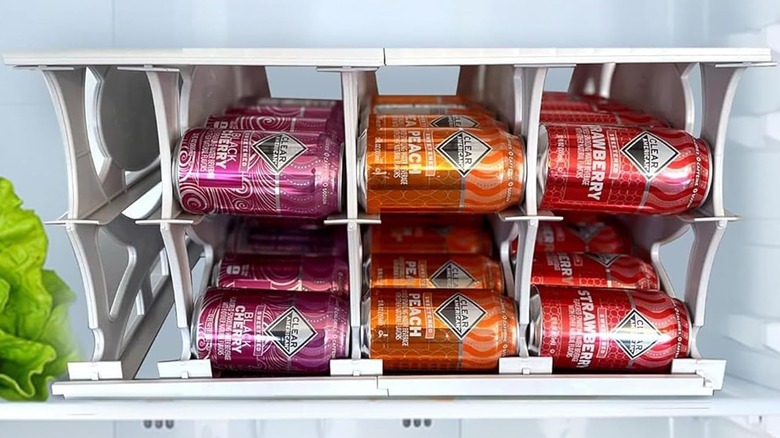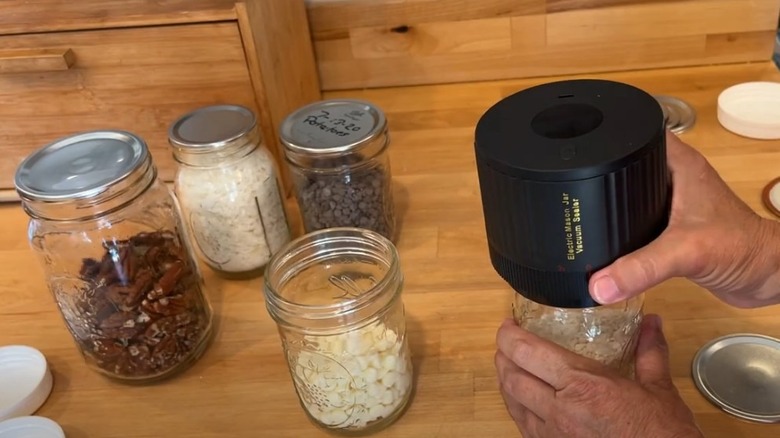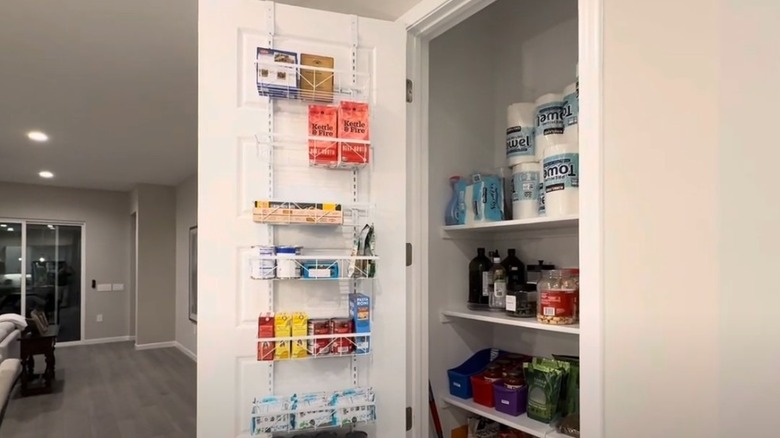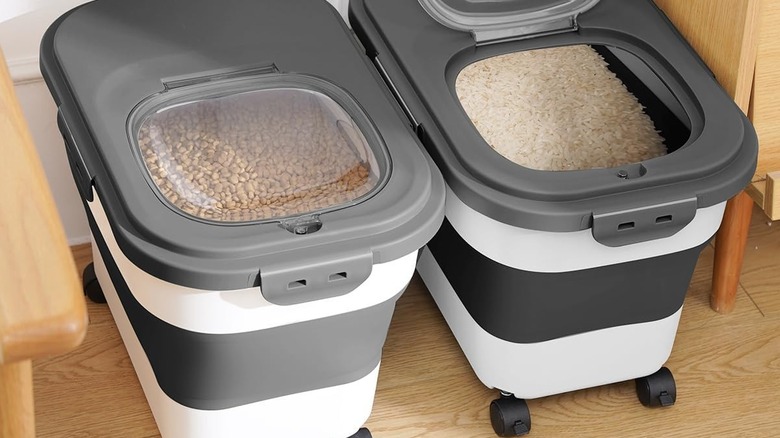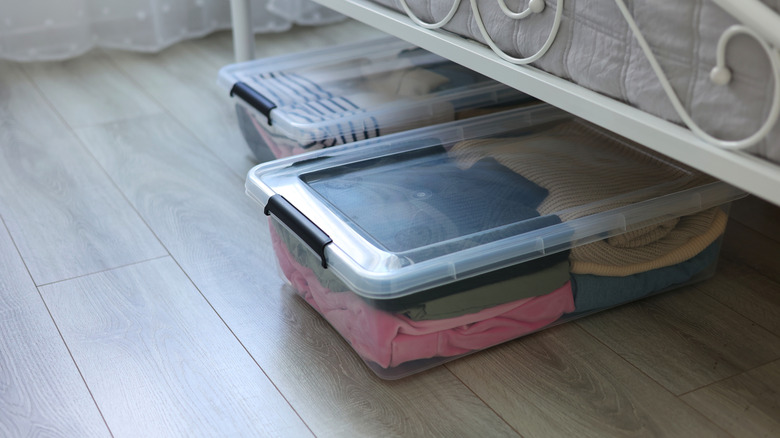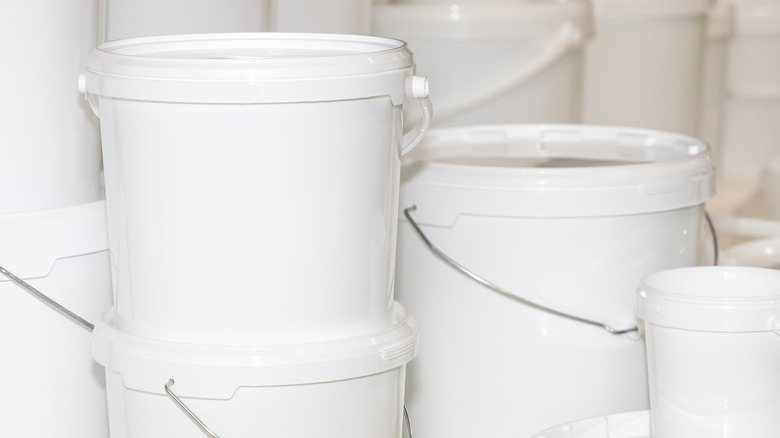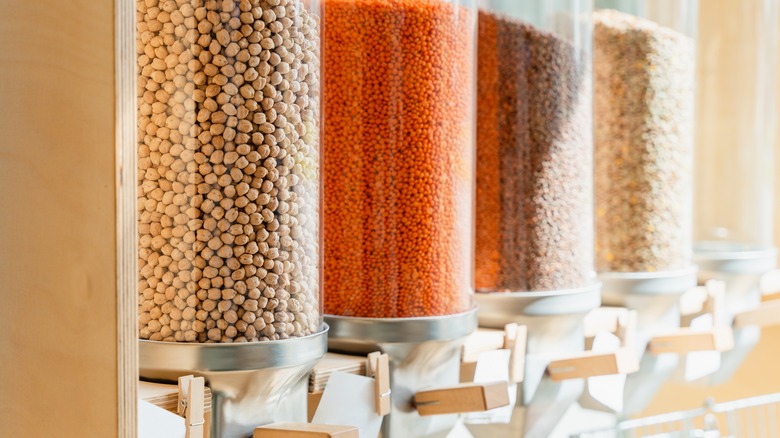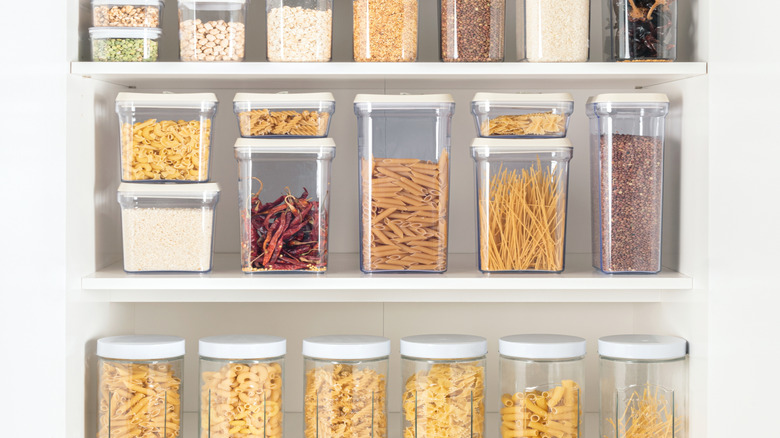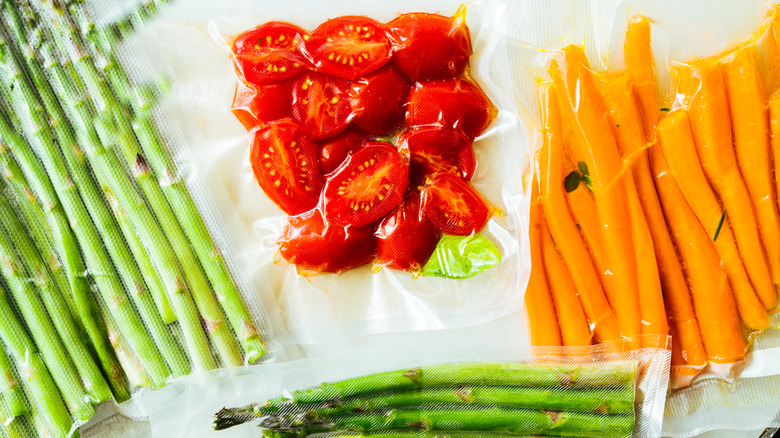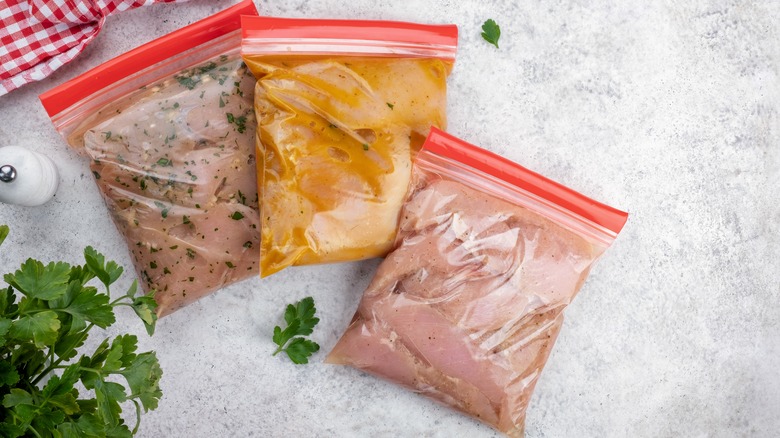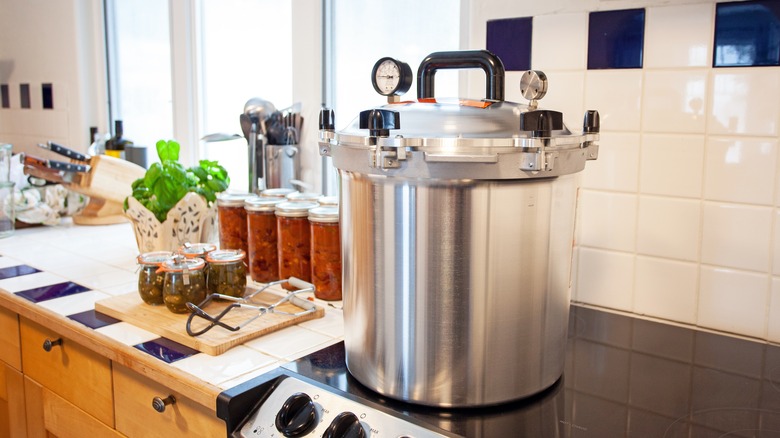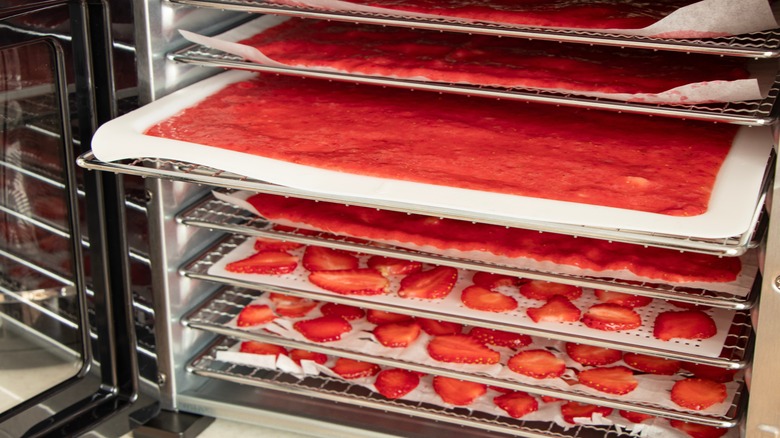13 Smart Tips For Storing Items You Buy In Bulk To Stay Organized
We may receive a commission on purchases made from links.
Have you decided that the best way to save money on groceries and household items is to start buying in bulk? You're not alone. But you've probably noticed one issue that can pop up because of buying larger quantities of items at one time — finding storage for everything and keeping them organized. Often, some perishables can also go bad before you've had a chance to use them. At that point, you're just throwing your money in the trash. Thankfully, there are tons of great ways to store your bulk items. There are even unique ways to use spaces in your home for stress-free storage after Costco bulk buys.
However, there are some things you should know if you are buying household staples in bulk to save your wallet. Firstly, it's always a good idea to practice the first-in, first-out (FIFO) method of storage. This method is especially important for food items and cleaning products, but it isn't necessary for paper goods. Rotation of items, with the oldest products in front and newer ones in back, ensures you use things before they go bad.
It's also important to store food safely. Label items with what they are and their recommended use-by date. For dry foods or home-canned items, you should store them in a way that protects them from air, heat, light, moisture, and critters. These tips will protect the investment you've made by buying in bulk, and here are some ways to store them.
Portioning food for freezing
Buying fresh food in bulk is a great way to save money, but the bulky containers they come in aren't easy to store. The best way to deal with this is to separate items into proper portions for you and your family, place the portions in freezer bags, and store them flat in your freezer. You can even prep items ahead of time to save meal prep time. Cut carrots into sticks, dice onions and peppers, and break down large containers/bags of freezer items or meat into meal-sized portions.
Rotating canned goods storage
Using vertical storage in your pantry is perfect for taking advantage of unused space. For canned goods, a storage rack that rotates old cans to the front and new ones to the back is the best way to ensure none expire before you can use them. It's even better if you can find an organizer that stacks and has customizable shelves to increase the holding capacity, so it can accommodate bulk items. Something like the Shelfreliance Cansolidator will help keep canned foods perfectly organized.
Vacuum sealing Mason jars for bulk dry goods storage
Using Mason jars to store dry goods is ideal for storing bulk items in your pantry. Dividing up large bags of beans, spices, pasta, or dehydrated fruits into quart-size jars with lids will make them more manageable. You can also easily see when you need to restock anything. Using an electric vacuum sealer helps keep your dry goods fresher for even longer. But be sure that you are only using this method on dry items, because vacuum sealing does not preserve items; it just keeps them fresh.
Over-the-door organizer for storage
An over-the-door organizer utilizes space that is perfect for storing extra items. You can use this type of organizer on the back of your pantry door for bulky items that don't fit on your shelves. If you're looking for a way to store extra toiletries, hang this type of organizer on the back of your bathroom or linen closet door. And just like that, you have created extra storage areas for your bulk items.
Large dry food storage bins
This type of storage solution is a great way to store bulk dry goods you need to access frequently, like flour, rice, sugar, or beans. Another option would be to use them as handy storage for bags of pet food. They can typically hold at least 20 pounds of dry goods, come with airtight lids, and have a flip-top opening for easy access to scoop what you need. Also, models like the DDMOMMY Collapsible Food Storage Container can collapse for easy storage and have rollers that make them portable.
Under bed storage
You most likely have used the area under your bed to store items like clothes, luggage, or other seasonal items. But you could also be using it to store bulk items like extra batteries, toothpaste, light bulbs, or even canned goods. You can use the flat totes you might store sweaters in to protect food items from dust bunnies and keep items you don't run out of often out of the way.
Food grade buckets
Food-grade buckets are the standard go-to for long-term food storage. They protect from all the enemies of food storage and are perfect if you have any area where you can keep them out of the way, like a basement or climate-controlled garage. Food-grade buckets are best for dry goods like rice, beans, pasta, or grains. You could also use Mylar bags in combination with buckets to protect your food even more, but not for more than five years. Make sure to label and date your buckets so you can rotate your food.
Dry food dispensers
There are a lot of different kinds of dry food dispensers on the market, with the cereal dispenser being one of the most popular. There are countertop models and even wall-mounted designs. Whatever kind you choose, they are a unique and great way to store and easily access bulk items like nuts, rice, granola, and yes, even cereal. These dispensers will also help keep your food items visible, which is a good way to make sure your food doesn't get wasted.
Airtight clear pantry containers
These types of containers are the standard in most "clean my pantry with me" TikTok videos, and for good reason. They keep dry goods visible, protected, and perfectly organized on pantry shelves. A great tip for using these to store flour is to put your flour bags in the freezer for five days and then add them to your airtight container afterwards. This will kill any eggs or bugs in the flour and make it safer for long-term storage. You will also want to be sure to label and date your containers so you don't accidentally mix up your sugar with the salt.
Vacuum seal bags
Vacuum-seal bags are a way to store food purchased in bulk to ensure it stays fresh for a long time. These types of bags are made specifically to be used with a home vacuum-sealer machine. You place your food inside the bag and place it on the machine; the air is removed, and then it is sealed. These work well when you want to portion out your food for freezer meal planning, keep fruits and veggies fresh in the fridge or freezer longer, or store dry goods in a more space-saving way.
Freezer meal planning
Sometimes the best way to store bulk food items is to use them to prepare meals, then freeze them. Not only will this combine your veggies and proteins into one easily storable freezer bag, but it will also save you time on making dinner throughout the week. Because most freezer meals utilize gallon-sized freezer bags, you can stack them in your freezer and save space. This is also a great way to break down bulk-sized packages of meat into usable portions. Don't forget to label and date your meals.
Home canning
Home canning has been around for quite a long time. It is the perfect way to preserve and store bulk amounts of food. For high-acid foods, you can use a water-bath canner, and for low-acid foods, a pressure canner will help you store your food longer. Home canning makes it possible to better organize your food, make it shelf-stable, and make it possible to have yummy foods even if they're out of season. This is a great way to store bulk food purchases if you don't have a lot of space in your refrigerator or freezer.
Bulk dehydration
Dehydrating food in bulk reduces the storage space requirements of your food. You can use this method on fruits and veggies and even to make jerky. When foods are dehydrated, they lose the majority of their water, which makes them more compact — perfect for storing in bags or jars in your pantry. Dehydration enables you to free up space in your refrigerator or freezer, similar to home canning. However, this storage/preservation method is not as long-term as canning. You will want to use your dehydrated foods within a year at most.
